Links to external sources may no longer work as intended. The content may not represent the latest thinking in this area or the Society’s current position on the topic.
The Rhynie Chert – our earliest terrestrial ecosystem revisited
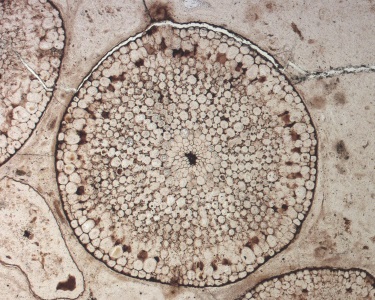
Scientific discussion meeting organised by Professor Dianne Edwards CBE FRS, Professor Liam Dolan FRS and Dr Paul Kenrick
New discoveries in the fields of developmental and functional biology are shedding light on the origins of land plants. We explored how exceptional fossils from our earliest preserved terrestrial ecosystem – the 400 million year old Rhynie Chert – could be integrated into a neobiological understanding of the evolution of plants and their interactions with other organisms and their environment.
The schedule of talks, organiser/speaker biographies and abstracts is available below.
Attending the event
This meeting has taken place. Recorded audio of the presentations will be available on this page shortly. Meeting papers are available in an issue of Philosophical Transactions B.
Enquiries: Contact the Scientific Programmes team
Organisers
Schedule
Chair
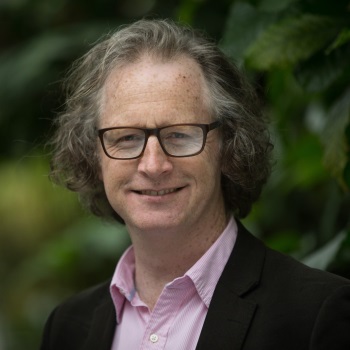
Professor Liam Dolan FRS, University of Oxford, UK

Professor Liam Dolan FRS, University of Oxford, UK
Liam Dolan is the Sherardian Professor of Botany and Head, Department of Plant Sciences at the University of Oxford. He was educated at University College Dublin and the University of Pennsylvania where he was awarded a PhD in 1991 for genetic analysis of leaf development in cotton (Gossypium barbadense) and root hair development in cress (Arabidopsis thaliana) supervised by Scott Poethig. Following his PhD, Dolan spent three years doing postdoctoral research at the John Innes Centre in Norwich with Keith Roberts. After 13 years as an independent project leader in Norwich, he moved to Oxford in 2009. His research aims to define genetic mechanisms that control the development of plants and determine how these mechanisms have changed since plants colonized the land 500 million years ago. His lab also uses fossils to test specific evolutionary hypotheses regarding root evolution. Dolan was elected a Fellow of the Royal Society in 2014. Dolan was also elected a member of the European Molecular Biology Organization (EMBO) and awarded the Presidents Medal of the Society for Experimental Biology (SEB) in 2001.
| 09:00 - 09:15 |
The Rhynie Chert - setting the scene
The Rhynie Chert is a 407 million year old hydrothermal deposit that is world renowned as the earliest well-preserved terrestrial ecosystem. Beginning in 1917, Kidston and Lang published a series of ground-breaking papers describing the permineralised remains of plants, algae, fungi and cyanobacteria, and they also proposed a broadly accurate interpretation of the depositional environment. Subsequently faunal elements were discovered and include arachnids, collembolans, nematodes and crustaceans. Following further excavations (1963-1971) blocks of fossiliferous chert became widely accessible leading to major discoveries that include new life cycle variants in land plants, mycorrhizal-like association, lichen-like associations, and the diversity and functions of the fungal, algal and cyanobacterial elements of the ecosystem. Beginning in the 1980s, an extensive programme of trenching, boreholes, geophysics, and geochemistry provided a much clearer understanding of the geology of the Rhynie Basin, the environments of deposition and the age of the sediments. The site is thus exceptional because of the quality of preservation of organisms and their associations and interactions. The plants have played a central role in our understanding of the early evolution of tissues and organ systems and they continue to do so in the modern era of developmental biology and genomics. 
Professor Dianne Edwards CBE FRS, Cardiff University, UK

Professor Dianne Edwards CBE FRS, Cardiff University, UKDianne Edwards is a distinguished botanist renowned for her study of early plant life on Earth. Through carefully documented field work and painstaking laboratory analysis, she has helped shed light on one of the most important evolutionary events in our planet’s history — the colonisation of land by plants. Her work on fossils discovered in Wales, Scotland and further afield has pinpointed the earliest known occurrences of biological features central to plant life. Through Dianne’s extensive contributions to the subject, we now understand plants in the Palaeozoic era to be far more complex and diverse than was previously imagined. Dianne is a Founder Fellow of the Learned Society of Wales, and since 2001 has been a Fellow of the Royal Society of Edinburgh. Awarded the CBE for Services to Botany in 1999, she has more recently served as the President of the Linnean Society in London. |
|
|---|---|---|
| 09:15 - 09:55 |
Modern hot spring analogues
Siliceous hot spring deposits, such as the Lower Devonian Rhynie Chert are the surface expression of terrestrial hydrothermal systems which create gold/silver bearing low-sulfidation epithermal mineral deposits deeper in the crust. Eruption of hot spring waters and precipitation of silica create a range of terrestrial and aquatic environments such as sinter apron complexes and areas of geothermally influenced wetland. These provide habitats for ecosystems that may be preserved in situ and, via permineralization of tissues, with exquisitely preserved anatomy. Sampling at active sinter-depositing hot springs allows characterisation of the physicochemical properties of the waters responsible for the Rhynie exceptional preservation. Broadly, thermal waters had elevated temperatures (100oC - ambient), relatively high sodium and chloride content (brackish - ca. 1.5 ppt salt), high pH (typically 8-9) and carried a suite of phytotoxic elements (e.g. arsenic, mercury, zinc, antimony). Fluctuating water availability, created by cyclic periods of hot spring eruption and quiescence, add further to these stresses. Observations of analogues for Rhynie such as Yellowstone show that physicochemical conditions plus the distribution of plants and animals profoundly affect not only ecosystem ecology and ecophysiology but also organism preservation potential. Such data raise questions of adaptation, specialization, endemism, and ecological vs. preservation biases. 
Dr Alan Channing, Cardiff University, UK

Dr Alan Channing, Cardiff University, UKAlan Channing is a geobiologist and palaeontologist interested in the geochemistry and biota of hot spring areas and the physical and chemical challenges faced by hot spring influenced ecosystems. His investigations of active hot spring areas worldwide have identified geothermally influenced wetlands as a key environment for the preservation of fossil hot spring floras. Here, plants (and animals) must cope with multiple stressors including elevated water temperature, pH, salinity and dissolved metal and metalloid concentrations. Alan is currently investigating the biota of newly discovered fossil hot spring ecosystems ranging in age from the early Holocene to Lower Palaeozoic which link his modern analogue studies back through geological time to the early Devonian ecosystem entombed in the Rhynie Chert. |
|
| 09:45 - 09:55 | Discussion | |
| 09:55 - 10:35 |
How unique were the Rhynie plants?
The Rhynie Chert is our most complete example of an early terrestrial ecosystem, but the extent to which it is representative of the vegetation of the time remains conjectural. Physical, chemical and sedimentological evidence indicates that it was a geothermal wetland, and comparisons with similar modern environments (e.g., Yellowstone hot-springs system) highlight the presence of thermal gradients and brackish and potentially toxic surface water. The plants may therefore have been highly adapted and confined to the hot-springs system or perhaps they were more widespread elements of the regional biota but preadapted to survive in unstable stressed environments. It seems highly unlikely that the plants represented a relictual (primitive) population as is sometimes invoked for wetland communities. Comparison with contemporary megafossil remains found at other sites provides very limited support for a regional element to the flora. Integrated analysis of in situ and dispersed spores offers an opportunity to test these hypotheses and favours an interpretation of preadaptation for at least some of the plants. 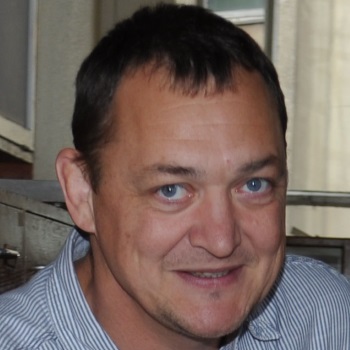
Professor Charles Wellman, University of Sheffield, UK

Professor Charles Wellman, University of Sheffield, UKCharles Wellman is Professor of Palaeobiology in the Dept. of Animal & Plant Sciences of the University of Sheffield. He received a B.Sc. in Geology from the University of Southampton in 1987 and a Ph.D. from Cardiff University in 1991. Charles’ Ph.D. research involved a study of early land plant microfossils from Scottish Silurian-Devonian ‘Lower Old Red Sandstone’ deposits. Subsequently Charles’ research has diversified to investigate diverse aspects of the colonisation of the land, including work on both living and fossil material, and a consideration of what lived on the land before the land plants. 
Professor Dianne Edwards CBE FRS, Cardiff University, UK

Professor Dianne Edwards CBE FRS, Cardiff University, UKDianne Edwards is a distinguished botanist renowned for her study of early plant life on Earth. Through carefully documented field work and painstaking laboratory analysis, she has helped shed light on one of the most important evolutionary events in our planet’s history — the colonisation of land by plants. Her work on fossils discovered in Wales, Scotland and further afield has pinpointed the earliest known occurrences of biological features central to plant life. Through Dianne’s extensive contributions to the subject, we now understand plants in the Palaeozoic era to be far more complex and diverse than was previously imagined. Dianne is a Founder Fellow of the Learned Society of Wales, and since 2001 has been a Fellow of the Royal Society of Edinburgh. Awarded the CBE for Services to Botany in 1999, she has more recently served as the President of the Linnean Society in London. |
|
| 10:25 - 10:35 | Discussion | |
| 10:35 - 11:00 | Coffee | |
| 11:00 - 11:30 |
Aquatic microfauna of the Rhynie and Windyfield Chert: a biologist's view on an old ecosystem
Understanding ecosystems of the past is different from investigating modern day ones. Many properties of now-gone ecosystems can only be indirectly inferred, whereas in modern ecosystems simple observations or measurements would provide a direct access. Indirect access in fossil ecosystems is provided by the life habits of the extinct organisms that have been living in these ecosystems. The life habits of an extinct organism can finally be inferred by reconstructing the functional morphology, based on the morphological details observed in fossils in comparison to modern counterparts. Such investigations gain precision when exceptionally well-preserved fossils are studied, like those of the Lower Devonian Rhynie and Windyfield Chert. These deposits preserve a diverse range of arthropod groups, partly with terrestrial, partly with aquatic, non-marine lifestyle. Among aquatic forms especially crustacean fossils have become known, such as the famous Lepidocaris rhyniensis. The preservation of the crustacean fossils provides details of their feeding apparatus down to the sub-micron-range, including different types of setal structures. Based on these observations we can infer that crustaceans in the Rhynie and Windyfield Chert performed a variety of different feeding strategies. The biota thus contained a rich and differentiated non-marine aquatic fauna already 400 million years ago. 
Dr Carolin Haug, Ludwig Maximilians University of Munich, Germany

Dr Carolin Haug, Ludwig Maximilians University of Munich, GermanyCarolin Haug studied biology at the Julius-Maximilians-Universität Würzburg (focus: animal ecology, sociobiology, palaeontology). She received her diploma in 2005 and moved to the University of Ulm for her Ph.D. thesis. In the work group Biosystematic Documentation she investigated the ontogeny and evolution of the arthropod head shield and developed new imaging techniques or modified existing methods, for example, composite imaging, stereo photography or auto fluorescence macro- and microscopy. In 2011, Carolin defended her Ph.D. thesis and became a postdoctoral researcher at Yale University and at the Ernst-Moritz-Arndt-Universität Greifswald. She is interested in fossilised development (see also http://www.palaeo-evo-devo.info) and in the evolution of tagmosis. For this purpose, she investigates mainly arthropods from different deposits yielding exceptional preservation, such as the 'Orsten', Burgess Shale, Rhynie chert, Mazon Creek, or Solnhofen Lithographic Limestones, always in comparison to their extant relatives. Carolin moved to Munich in 2013 to continue her research there at the Ludwig-Maximilians-Universität. |
|
| 11:30 - 11:45 | Discussion | |
| 11:45 - 12:15 |
Terrestrial invertebrates in the Rhynie Chert ecosystem
The Early Devonian Rhynie and Windyfield cherts remain a key locality for understanding early life on land. They host the oldest unequivocal nematode worm (Nematoda), which may also offer the oldest evidence for herbivory via plant parasitism. The trigonotarbids (Arachnida: Trigonotarbida) preserve the oldest book lungs and were probably predators with evidence for liquid feeding. The oldest mites (Arachnida: Acariformes) are represented by taxa known to include mycophages and predators on nematodes today. The oldest harvestman (Arachnida: Opiliones) includes the oldest tracheae and male and female genitalia. Myriapods are represented by a scutigeromorph centipede (Chilopoda: Scutigeromorpha), probably a cursorial predator on the substrate, as well as putative millipedes (Diplopoda). The oldest springtails (Hexapoda: Collembolla) probably acted as mycophages. The oldest true insects (Hexapoda: Insecta) are represented by a species known from chewing (non-carnivorous?) mandibles and another with a gut infill of phytodebris. Coprolites also offer insights into diet, and previous assumptions that several taxa were spore-feeders is challenged. Rhynie appears preserve a largely intact community of terrestrial animals, but some expected groups are absent. As has been argued for plants, Rhynie may be sampling an atypical ecosystem characterised by invertebrates adapted to life on the hot springs margins. 
Dr Jason Dunlop, Museum fur Naturkunde, Germany

Dr Jason Dunlop, Museum fur Naturkunde, GermanyJason Dunlop studied zoology at the University of Leeds and palaeontology at the University of Manchester. His PhD, supervised by Paul Selden, focussed on an extinct group of arachnids called trigonotarbids; especially well-preserved examples of which were restudied from the Rhynie Chert. His research focuses on fossil arachnids and their relatives, integrating data from living organisms with the fossil record to better understand the origins, early evolution and functional morphology of terrestrial arthropods. He has published several papers on Rhynie Chert fossils, including the discovery of the oldest harvestman and a restudy of the oldest lungs known from any terrestrial animal. Since 1997 he has been curator of arachnids and myriapods at the Museum für Naturkunde Berlin. He is also Secretary of the International Society of Arachnology and Vice-President of the European Society of Arachnology. |
|
| 12:15 - 12:30 | Discussion | |
| 12:30 - 13:30 | Lunch |
Chair

Professor Jane Langdale FRS, University of Oxford, UK

Professor Jane Langdale FRS, University of Oxford, UK
Jane Langdale’s research is broadly themed upon the genetics and evolution of plant development (see langdalelab.com). Diverse taxa including mosses, ferns and seed plants are used to investigate how developmental mechanisms were modified during land plant evolution. In addition, knowledge of chloroplast development and leaf anatomy is being applied in the context of the international effort to engineer C4 rice (see c4rice.com).
Since 2006 she has been Professor of Plant Development in the Plant Sciences Department at the University of Oxford, and a Senior Research Fellow at The Queen’s College Oxford.
| 13:30 - 14:00 |
The early evolution of land plants and their life cycles
One of the most surprising discoveries in the Rhynie Chert was a completely new variant of the land plant life cycle in which both the gamete-bearing (haploid) and the spore-bearing (diploid) phases were independent, free-living plants of similar morphological and histological complexity. Sporophytes were distinguishable by their sporangia; gametophytes by their gametangia, which were often borne on distinctive bowl-shaped apices. In two species, gametophytes were significantly smaller than the sporophytes, whereas in others they were of comparable size. Otherwise, both phases were leafless, axial structures possessing rhizoids, vascular tissues and stomates. These discoveries have relevance to understanding the early evolution of the land plant life cycle, but their significance depends on precisely how the fossils relate to the plant tree of life. The leading hypothesis indicates that these fossils are stem group vascular plants, providing direct evidence that early life cycles were markedly different in form and ecology to those of modern pteridophytes. Divergence in size and growth architecture of gametophyte and sporophyte – a feature of modern pteridophytes – had begun by 407Ma, but the extent to which this life cycle variant persisted in early vascular plants floras remains an open question. 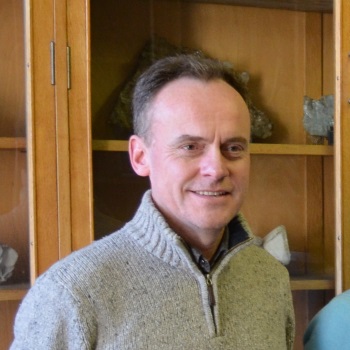
Dr Paul Kenrick, The Natural History Museum, London, UK

Dr Paul Kenrick, The Natural History Museum, London, UKPaul Kenrick is a research scientist at The Natural History Museum, London. His interest in the evolution of land plants was sparked by an early encounter as a student with the tiny fossil plant Cooksonia. His career has been based in museums, including The Swedish Museum of Natural History, Stockholm, and The Field Museum, Chicago, where he integrated fossil evidence on early plants with the emerging phylogenetic picture based on living species. From 2008 to 2011 he was visiting professor in Plant Sciences at the University of Oxford. Kenrick has received several awards including the Henry Allan Gleason Award of The New York Botanical Garden and the Bicentennial Medal of the Linnean Society of London. He has authored two books and over 70 peer-reviewed publications. |
|
|---|---|---|
| 14:00 - 14:15 | Discussion | |
| 14:15 - 14:45 |
Effects of cellular changes to the evolution of land plant development and life cycles
Tissue and organs are composed of cells, and the development and resulted life cycle reflect the dynamics of cell behavior. Since the same or similar regulatory mechanisms at the cellular level can be repeatedly used in different developmental processes, changes of cellular characters and mechanisms can change multiple developmental processes with pleiotropic effects. Furthermore, new morphology originated from changes at the cellular level induces further morphological changes. However, genetic regulations of cellular characters and mechanisms especially deeply related to the evoluiton of land plant body plan have not been well studied. In this presentation, I will talk some examples to connect the evolution of development and life cycle to the changes at the cellular level. (1) The life cycle of Physcomitrella patens is a series of changes in stem cell characters. (2) Changes of stem cell characters switch body plants between gametophyte and sporophyte generations. (3) Sporophyte generation can be extended by the elongation of stem cell longevity. (4) Extended longevity of stem cells form new stem cells to be branches. (5) Periclinal cell divisions producing inner and outer tissue in antheridia, archegonia, and sporangia as well as water conducting tissue are regulated by the same molecular mechanisms, suggesting the partial homology of these organs. 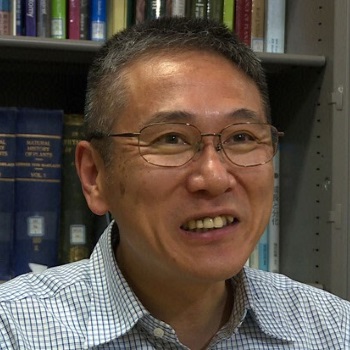
Professor Mitsuyasu Hasebe, National Institute for Basic Biology, Japan

Professor Mitsuyasu Hasebe, National Institute for Basic Biology, JapanProfessor Mitsuyasu Hasebe received his Ph.D. from the University of Tokyo in 1992 for the molecular phylogeny of extant gymnosperms and ferns, which includes the first inference of the monophyly of extant gymnosperms and the phylogeny of leptosporangiate fern families. He started EvoDevo of floral homeotic genes in non-flowering plants during his stay in Jody Banks’s laboratory using the fern Ceratopteris in Purdue University. He expanded his EvoDevo works with the moss Physcomitrella, when he moved to National Institute for Basic Biology. He was a Japanese leader of the international consortium for the lycopod Selaginella moellendorffii and the moss Physcomitrella patens genome projects. His group worked on the evolution of development, life cycle, and stem cell formation in land plants. He is now interested in the evolution of complex and novel traits including land plant development, carnivorous plants, seismonastic movement of Mimosa pudica. |
|
| 14:45 - 15:00 | Discussion | |
| 15:00 - 15:30 | Tea | |
| 15:30 - 16:00 |
Organs and tissue systems of Rhynie Chert plants
The publication of Kidston and Lang’s monograph on the silicified plants from the Rhynie chert (1917–1921) is a real milestone in palaeobotany, because it was the first time that plants showing a great amount of anatomical detail were described from rocks as old as Early Devonian. The plants are often found in life position. Moreover, the often pristine preservation of very delicate short-lived developmental stages indicates a rapid preservation in silica. Therefore, the Rhynie chert provides a series of unique snapshots of an early terrestrial ecosystem. Between 1917 and 1920 Kidston and Lang described five land plants from the chert in great detail. Although all, except for Asteroxylon mackiei, look at first glance quite similar as they all consist of dichotomously branching naked axes, a detailed look shows striking differences between the individual taxa. However, several of these differences would never have been revealed by the much more common compression fossils. Even a century after the publication of the first part of Kidston and Lang’s monumental monograph the Rhynie chert continues to yield important new information. In the 1980s and 1990s Winfried Remy and his co-workers published several papers on gametophytes of Rhynie chert plants. In later years additional ones were described and life cycles could be reconstructed in more detail. Gametophytes are now known of four of the seven Rhynie chert plants, i.e. Aglaophyton major, Rhynia gwynne-vaughanii, Horneophyton lignieri and Nothia aphylla. The first two had rather simple gametophytes, whereas those of the latter two taxa are more complex. More recently published papers deal with vegetative structures in Rhynia gwynne-vaughanii and the sporangia-bearing axes of Asteroxylon mackiei, the largest and most complex plant from the Rhynie chert, which superficially looked quite similar to the modern lycopsid Huperzia selago. Currently, the development of the vascular strand in the underground parts and the aerial axes of Asteroxylon mackiei and the ontogenetic development of aerial axes of Aglaophyton major and Rhynia gwynne-vaughanii are subjects of research. Apart from the taxa described by Kidston and Lang, two other taxa have been described from the Rhynie and the nearby Windyfield chert localities. These are, however, not preserved in such great detail as the ones originally described by Kidston and Lang. This presentation will therefore focus on the well-studied taxa and give an overview of the various organs, rhizomatic and aerial axes, life stages and tissues. 
Professor Hans Kerp, Institut fur Geologie und Palaeontologie, Germany

Professor Hans Kerp, Institut fur Geologie und Palaeontologie, GermanyHans Kerp (1954; Venlo, The Netherlands) studied geology in Utrecht and obtained his MSc with a thesis on the lower Permian flora of Sobernheim, Saar-Nahe Basin, Germany. His PhD thesis “On Callipteris Brongniart from the European Rotliegend basins” (Utrecht, 1986) dealt with the systematics, ecology and biostratigraphy of a genus of fossil fern-like foliage that was originally regarded as a marker for the lower Permian. After his PhD he was appointed as lecturer at the Laboratory of Palaeobotany and Palynology in Utrecht. Early 1989 he moved to Philadelphia, where he accepted a position as research associate at the Department of Geology at the University of Pennsylvania. Mid-1990 he returned to Utrecht where he accepted a position as research scientist. In 1991 he was appointed as professor for palaeobotany/geology at the University of Münster Germany) as the successor of Winfried Remy (1928–1995). Via Winfried Remy, his research technician Hagen Hass and Thomas N. Taylor, he became involved in Rhynie chert research on which he published over 30 papers and book chapters, initially mostly in cooperation with Hagen Hass and Thomas N. Taylor, and later with Michael Krings (Munich). These papers mainly concentrated on the anatomy of poorly known taxa such as Nothia and Asteroxylon, life cycles of land plants, and on fossil microorganisms. Another major research topic is the evolution of Carboniferous, Permian and Triassic floras, notably systematics, whole-plant reconstructions, ecology, vegetation dynamics and distribution patterns. Special attention is given to gymnosperms with cuticle preservation. He published over 200 papers and book chapters, including over 130 papers in peer-reviewed journals. Since 1994 Hans Kerp is editor-in-chief of the Review of Palaeobotany and Palynology and he serves as editorial board member of several other journals such as Fossil Record, Palaeontographica Abt. B and The Palaeobotanist. Since 2013 he is vice-president of the Paläontologische Gesellschaft and since 2016 a standing member of the review panel for geology and palaeontology of the German Science Foundation (DFG). |
|
| 16:00 - 16:15 | Discussion | |
| 16:15 - 16:45 |
The evolution of branching forms in plants
The evolution of vascular plants from their bryophyte-like precursors underpinned a ten-fold increase in species numbers and changes the course of plant and animal evolution. Whilst living bryophytes and vascular plants have widely disparate forms, fossil intermediaries reveal stepwise morphological innovations priming the radiation of vascular plant forms, including the innovation of branching. The genetic pathways that regulate branching are well characterised in flowering plants and are conserved within the land plants, predating the origin of branching. This talk will discuss the genes involved in the evolution of branching. 
Dr Jill Harrison, University of Bristol, UK

Dr Jill Harrison, University of Bristol, UKThe conquest of land by plants over 450 million years ago was one of the most significant events in our planet's history, and was underpinned by a series of key innovations in plant architecture during evolution. My group aims to identify the developmental and genetic basis of two such innovations- three dimensional shoot growth and branching. To this end we are using a range of model systems representing different stages of plant evolution such as liverworts, mosses and lycophytes. |
|
| 16:45 - 17:00 | Discussion |
Chair
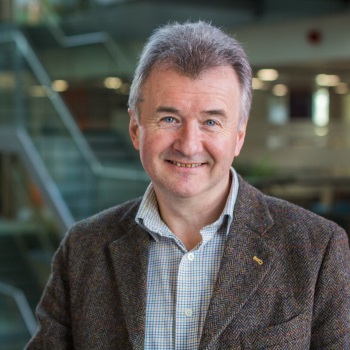
Professor Alistair Hetherington, University of Bristol, UK

Professor Alistair Hetherington, University of Bristol, UK
Alistair Hetherington is Melville Wills Professor of Botany in the University of Bristol. His research is focussed on understanding the cellular mechanisms that underlie plant responses to changes in their environment. To do this he works on the pores found on the surfaces of leaves. These open and close in response to changes in environmental signals such as atmospheric carbon dioxide, light, plant hormones and changes in atmospheric relative humidity. He has a long-standing interest in the role of the calcium ion as an intracellular second messenger and current interests include mechanism responsible for integration of multiple signals in guard cells and the evolution of stomata.
| 09:00 - 09:30 |
Evolution of rooting systems

Professor Liam Dolan FRS, University of Oxford, UK

Professor Liam Dolan FRS, University of Oxford, UKLiam Dolan is the Sherardian Professor of Botany and Head, Department of Plant Sciences at the University of Oxford. He was educated at University College Dublin and the University of Pennsylvania where he was awarded a PhD in 1991 for genetic analysis of leaf development in cotton (Gossypium barbadense) and root hair development in cress (Arabidopsis thaliana) supervised by Scott Poethig. Following his PhD, Dolan spent three years doing postdoctoral research at the John Innes Centre in Norwich with Keith Roberts. After 13 years as an independent project leader in Norwich, he moved to Oxford in 2009. His research aims to define genetic mechanisms that control the development of plants and determine how these mechanisms have changed since plants colonized the land 500 million years ago. His lab also uses fossils to test specific evolutionary hypotheses regarding root evolution. Dolan was elected a Fellow of the Royal Society in 2014. Dolan was also elected a member of the European Molecular Biology Organization (EMBO) and awarded the Presidents Medal of the Society for Experimental Biology (SEB) in 2001. |
|
|---|---|---|
| 09:30 - 09:45 | Discussion | |
| 09:45 - 10:15 |
Evolution and palaeophysiology of the vascular system
Photolithotrophic growth on land using atmospheric CO2 inevitably involves H2O vapour loss. Embryophytes ≥ 100 mm tall are homiohydric and endohydric with mass flow of aqueous solution through the xylem in tracheophytes. The Rhynie sporophytes provide structural detail enabling analysis of the hydraulics of H2O supply to the transpiring surface, and the potential for gas exchange with the Devonian atmosphere, allowing modelling of the fluxes of H2O and CO2 in the plant-atmosphere system. Xylem carrying H2O under tension involves programmed cell death, rigid cell walls and embolism repair; evidence from fossils provides little evidence on these functions. The phenylalanine ammonia lyase essential for lignin synthesis was derived from horizontal gene transfer. The absence of an endodermis in the Rhynie plants poses limits on the regulation of supply of soil nutrients to the shoots. The transfer of organic solutes from the sites of photosynthesis to growing and storage tissues involves mass flow through phloem in extant tracheophytes, although the Rhynie plants show little evidence of phloem. Extant examples of the arbuscular mycorrhizas found in Rhynie plants exchange soil-derived nutrients (especially P) for plant-derived organic matter involving bidirectional mass flow along the hyphae. 
Professor John Raven FRS, University of Dundee, UK

Professor John Raven FRS, University of Dundee, UKJohn A Raven FRS is Emeritus Professor of Biology at the University of Dundee UK where he has been researching and teaching since 1971 after a BA (1963) and PhD (1967) in Botany from the University of Cambridge where he also did postdoctoral work and was a fixed-term lecturer. He has published more than 360 peer-reviewed papers and over 50 book chapters, has authored one book (1984) and co-authored another (1997, 2nd edition 2007), and was chair of the panel that produced the Royal Society of London report on Ocean Acidification in 2005. He has published on the ecophysiology and biogeochemistry of marine, freshwater and terrestrial photosynthetic organisms since 1968. Other areas of John’s current research range from how photosynthetic light harvesting and photochemical reactions evolved, through colonization of the land by photosynthetic organisms in the Palaeozoic and, possibly, earlier, to photosynthetic aspects of astrobiology. |
|
| 10:15 - 10:30 | Discussion | |
| 10:30 - 11:00 | Coffee | |
| 11:00 - 11:30 |
Evolution and palaeophysiology of stomata
Stomata are one of the key innovations of land plants. The long held notions of unitary origin and conservation of function, viz. active regulation of gaseous exchange via aperture changes mediated by a potassium pump, from mosses and hornworts to angiosperms, and including Palaeozoic fossils over 400 million years old, receives increasing support today from the identification of a growing army of genes common to all extant land plant clades. However, recent functional studies present highly conflicting scenarios: on the one hand aperture changes in response to a range of experimental treatments in the moss Physcomitrella point to early acquisition of aperture regulation, on the other very different responses in most pteridophytes are indicative of a gradual evolution. New structural, developmental and physiological data on mosses and hornworts increasingly point to the primeval function of stomata as facilitators of sporangium desiccation and spore dispersal. In hornworts, absence of potassium pumps together with apertures that are non-responsive to environmental stimuli support this notion. Similarly in mosses developmental changes in guard cell wall biochemistry render the apertures immovable. In addition, the sporophytic intercellular spaces in both these groups are initially liquid- filled whereas in vascular plants they are gas-filled from the outset. 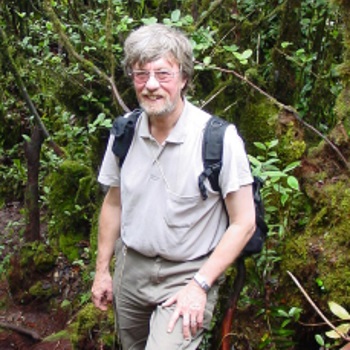
Professor Jeff Duckett, The Natural History Museum, London, UK

Professor Jeff Duckett, The Natural History Museum, London, UKJeff Duckett has spent over 4 decades researching the biology and evolution of bryophytes and pteridophytes over six continents. His major contributions include the cytoskeleton, desiccation biology, gametophyte-sporophyte junctions, in vitro cultivation and conservation, fungal symbioses, sex determination, spermatogenesis, stomatal function, systematics, water and solute transport. On-going projects, with Silvia Pressel at the NHM, include the structure, function and evolution of bryophyte stomata, fungal associations in lower land plants and The Bryophyte Floras of South Atlantic Islands. He was the 2008 recipient of the Linnean Society Medal for Botany and, in 2007, the Richard Spruce Award, from the International Association of Bryologists, marked his outstanding research in Bryology over 25 years. He is a past President and Honorary Member of the British Bryological Society. |
|
| 11:30 - 11:45 | Discussion | |
| 11:45 - 12:15 |
Exploring the geochemical distribution of organic carbon in early land plants
Phytoterrestrialisation resulted in anatomical innovations which were accompanied by the evolution of biosynthetic pathways for secondary metabolites such as lignin. The question is whether or not the high resolution spatial distribution of the diagenetic products of such metabolites and cell wall materials can be correlated with microscopic structures. Surface analytical techniques including helium ion microscopy (HIM), X-ray photoelectron spectroscopy (XPS) and time-of-flight mass spectrometry (ToF-SIMS) have been used to meet this challenge. An argon gas cluster ion beam source was rastered over analysis areas to remove any post-depositional ingress from the top 3 nm of the specimen surface. The resolution of the HIM is 0.3 nm. The bonding environments of the organic carbon were identified using XPS on Rhynia gwynne-vaughanii and then ToF-SIMS was used to map the distribution of positively charged fragment ions for both aromatic and aliphatic hydrocarbons as well as silicon across the diameter of a Rhynia stem from the Rhynie Chert. This presentation will give an overview of high resolution surface analytical techniques that may help us gain a deeper understanding of the distribution of metabolites within the organs and tissues of early land plants and associated microbial systems. 
Dr Geoff Abbott, Newcastle University, UK

Dr Geoff Abbott, Newcastle University, UKAfter graduating as a chemist, Dr. Geoffrey Abbott has more than three decades of research experience applying molecular geochemical, biogeochemical and analytical pyrolysis techniques to address major questions related to the evolution of the Earth’s environment. His research combines detailed laboratory experiments on organic geochemical processes with studies of the carbon cycle in ancient and modern environments. This knowledge is then used to illuminate a key period in Earth’s history namely when land plants first appeared on the Earth’s surface. Dr. Abbott has identified molecular components of the earliest plant fossils and is a pioneer of the mechanistic understanding of thermal biomarker transformations. He is a founder member of the British Organic Geochemical Society (BOGS) and is an Associate Editor of two of the major international journals in his field. |
|
| 12:15 - 12:30 | Discussion | |
| 12:30 - 13:30 | Lunch |
Chair
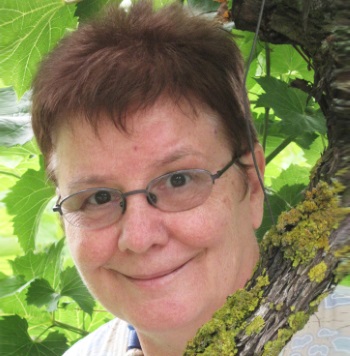
Professsor Rosmarie Honegger, University of Zurich, Switzerland

Professsor Rosmarie Honegger, University of Zurich, Switzerland
Professor Honegger was born 1947, growing up in rural Switzerland (Emmental). She undertook a diploma as a primary school teacher, then went on to study biology at the University of Basel with a PhD thesis on Ascus structure and function in lichen-forming ascomycetes. From 1976-2009, Professor Honegger worked at the Cell Biology lab of the Institute of Plant Biology of the University of Zürich as an assistant, lecturer then professor, recieving research grants from the Swiss National Science Foundation. Professor Honegger’s work has a focus on the structure and function of lichen symbiosis in comparison with other types fungal interactions with plants or algae, intraspecific genetic diversity of lichen-forming ascomycetes and their photobionts, and on mating systems of lichen-forming ascomycetes. She has participated in international congresses (lichenology, mycology, phytopathology, mycorrhizal research, cell biology) and intense teaching activities at all levels of the academic curriculum. Since 2011 collaboration with Prof. Dianne Edwards, University of Cardiff, Wales, Professor Honegger has worked on fossils of the Silurian and Lower Devonian of the Welsh borderland. She has been awarded the Acharius Medal 2008 and 2015 Medal of the Linnean Society of London.
| 13:30 - 14:00 |
Microfungi and microfungal interactions: diversity and ecological roles
The Lower Devonian Rhynie chert is paramount to our conception of the roles of fungi in early continental ecosystems. However, this idea is based on a small number of well-documented specific interactions, whereas the majority of Rhynie chert fungi have received little or no attention. Hyphae, mycelial cords, vesicles, and reproductive units are almost ubiquitous in the Rhynie chert matrix, in litter layers, and within plant parts. The abundance and morphological variability of these remains suggest that fungi were important components of many vital processes that sustained the Rhynie ecosystem. Attempts to estimate fungal paleobiodiversity and specify what ecological roles these organisms played are generally hampered by the fact that the vast majority of fungal remains occur detached from the systems on or in which they were produced, and thus do not provide a complete range of features necessary to determine their systematic affinities. Nevertheless, certain fungal remains display structural features that, albeit not diagnostic, are consistent among specimens, and thus make it possible to recognize distinctiveness. At high magnification, others reveal consistent patterns of association suggestive of specific organismal interactions. These fossils contribute greatly to a more accurate understanding of the complex microbial interrelatedness in early continental ecosystems. 
Professor Michael Krings, Bayerische Staatsammlung fur Palaeontologie and Geologie, Germany

Professor Michael Krings, Bayerische Staatsammlung fur Palaeontologie and Geologie, GermanyMichael Krings is curator for fossil plants at the Bavarian State Collection for Palaeontology and Geology (SNSB-BSPG) in Munich, Germany, and professor of plant paleobiology at the Ludwig-Maximilians-Universität Munich. He also holds an affiliate faculty position in the Department of Ecology and Evolutionary Biology at the University of Kansas. He received his PhD in botany from the University of Münster, Germany, and was an Alexander von Humboldt-Foundation postdoctoral fellow at the University of Kansas. His research interests include Carboniferous, Permian, and Triassic seed plants and the biology and ecology of microorganisms in late Paleozoic terrestrial ecosystems. |
|
|---|---|---|
| 14:00 - 14:15 | Discussion | |
| 14:15 - 14:45 |
The origin and evolution of plant/fungal interactions
Associations between plants and fungi are ancient, dating back at least 460 million years, and are widely considered to have had a fundamental role in the evolution of terrestrial ecosystems. A key idea, first proposed by Pirozynski and Malloch in 1975, is that the evolution of symbioses between semi-aquatic green algae and aquatic fungal-like organisms propelled plant terrestrialisation, enabling both partners to overcome the novel challenges of life on land. Multidisciplinary approaches to studying fungal partnerships in extant ‘lower’ land plants, the closest living relatives to the first land colonisers, are providing novel insights into the origin and evolution of plant-fungus associations, showing these to involve diverse fungal partners, including members of the Mucoromycotina - an ancient but poorly understood lineage. Distinct cytological features of colonization, separating for example Mucoromycotina and Glomeromycotina symbionts in living basal land plants, allow for a re-assessment of fungal associations in fossil plants. Conversely, well-defined fossils are required for calibrating molecular clocks, providing more accurate date estimates for the origin and diversification of clades as well as revealing extinct and sometimes novel combinations of features and associations. 
Dr Silvia Pressel, The Natural History Museum, London, UK

Dr Silvia Pressel, The Natural History Museum, London, UKSilvia Pressel is a Researcher in Botanical Diversity in the Department of Life Sciences at the Natural History Museum, London. Her research integrates expertise in bryophyte systematics, evolution, in-vitro manipulation and anatomy to tackle major questions on the origin and evolution of key innovations of land plants including stomata, desiccation-tolerance and fungal symbioses. A major on-going collaborative project with Jeff Duckett at the NHM and colleagues at Leeds University, Royal Botanic Gardens, Kew and the University of Cambridge focuses on unravelling the origins, evolution and functioning of land plant-fungus partnerships. Recently, she was the recipient of the Trail-Crisp Award of the Linnean Society of London 2014, in recognition of her outstanding contributions to biological microscopy published in the UK. 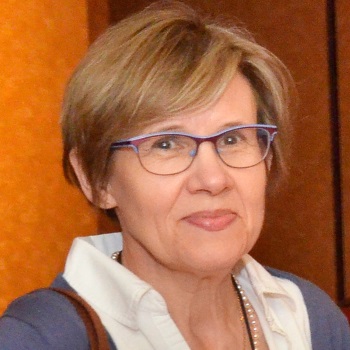
Dr Christine Strullu-Derrien, The Natural History Museum, London, UK

Dr Christine Strullu-Derrien, The Natural History Museum, London, UKChristine Strullu-Derrien is an independent researcher, Scientific Associate at the Natural History Museum London. She also gives lectures in plant evolution and biology and works as a scientific consultant in France. After a career teaching in secondary schools, she embarked on a PhD in environmental sciences and palaeobotany. She received her PhD from the University of Angers (France) and the University of Liège (Belgium) in 2010. She held a Marie Curie Intra-European Fellowship at the Natural History Museum London (2012-2014) and was an invited researcher at the INRA Centre of Nancy-Lorraine (2015). Her research interests are on the origin and evolution of Fungi and fungi-like micro-organisms associated with plants studied from the fossil record and on the vascular anatomy of plants, which is strongly linked with fungal activity. She received the prize of the Société des Sciences Naturelles de l'Ouest de la France for her PhD, and she is an elected member of the Council of the Société Botanique de France. |
|
| 14:45 - 15:00 | Discussion | |
| 15:00 - 15:30 | Tea | |
| 15:30 - 16:00 |
Plant-fungal symbioses in relation to early land environment
The colonisation of Earth’s land masses by plants >475 Ma marked a turning point in the development of the biosphere and atmosphere, with widespread consequences for the future of terrestrial life. Rhynie Chert fossils indicate early plants hosted diverse fungal endophytes structurally analogous to mycorrhizal associations in modern plants. Recent research has suggested greater diversity in fungal symbiont identity, structure, and functioning in the earliest diverging clade of extant land plants – liverworts – giving rise to the hypothesis that symbiotic options were available to the earliest land plants. The rise of plants likely drove the long-term shift towards the modern climate, but little is known about how early plant-fungal symbiosis may have influenced this. Experiments show that liverwort-fungal symbiotic function varies according to fungal identity, with carbon-for-phosphorus exchange either enhanced or suppressed under simulated-Paleozoic [CO2]. By incorporating these findings into biogeochemical models, we show that differences in symbiotic nutrient acquisition strategies can greatly alter the Paleo-environmental conditions sufficient to drawdown [CO2] to glacial levels and to either promote or delay the rise of oxygen. The group conclude that an accurate depiction of plant-fungal systems, informed by experiments, is key to resolving the question of how the first terrestrial ecosystems altered our planet. 
Dr Katie Field, University of Leeds, UK

Dr Katie Field, University of Leeds, UKKatie Field is a BBSRC Translational Research Fellow and University Academic Fellow in Plant-Soil Processes at the University of Leeds, UK. She has long-standing research interests in mycorrhizal symbiosis and plant evolution, particularly in the role symbiotic fungi may have played in facilitating the colonisation of Earth’s terrestrial environment by plants. Katie graduated from Durham University in 2005 and was awarded her PhD in 2009 at the University of Sheffield. Her postdoctoral research was conducted at the University of Sheffield where she investigated the functional and evolutionary significance of fungal associations in a variety of land plant clades including ferns and bryophytes. Together with her collaborators and her group in Leeds, Katie’s current research focuses on the functioning, diversity and regulation of symbiotic fungi in bryophytes, lycopods and ferns within an evolutionary context. She is also using translational approaches to apply her techniques and expertise to develop sustainable approaches in future agriculture. |
|
| 16:00 - 16:15 | Discussion | |
| 16:15 - 17:00 |
Panel discussion

Professor Dianne Edwards CBE FRS, Cardiff University, UK

Professor Dianne Edwards CBE FRS, Cardiff University, UKDianne Edwards is a distinguished botanist renowned for her study of early plant life on Earth. Through carefully documented field work and painstaking laboratory analysis, she has helped shed light on one of the most important evolutionary events in our planet’s history — the colonisation of land by plants. Her work on fossils discovered in Wales, Scotland and further afield has pinpointed the earliest known occurrences of biological features central to plant life. Through Dianne’s extensive contributions to the subject, we now understand plants in the Palaeozoic era to be far more complex and diverse than was previously imagined. Dianne is a Founder Fellow of the Learned Society of Wales, and since 2001 has been a Fellow of the Royal Society of Edinburgh. Awarded the CBE for Services to Botany in 1999, she has more recently served as the President of the Linnean Society in London. |
